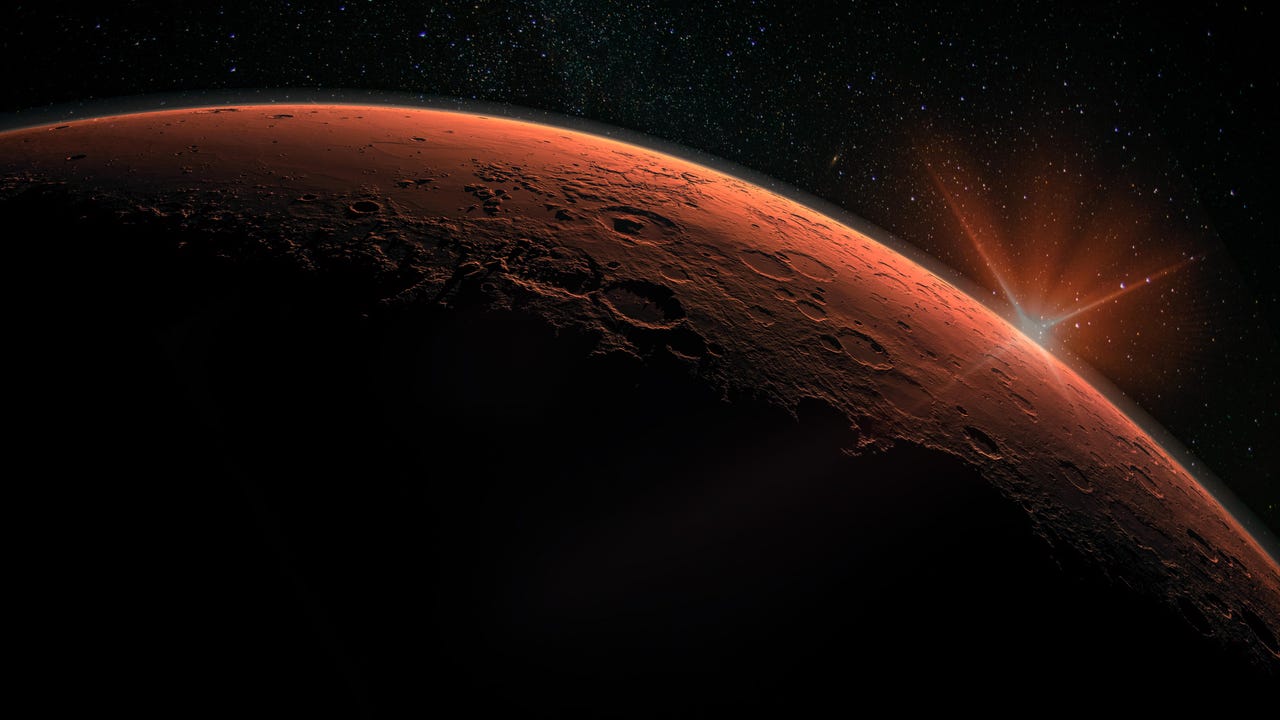































 Image: Shutterstock
Image: Shutterstock NASA has released an audio clip of the sounds of space rocks smashing into the Red Planet captured by the Mars Insight lander's seismometer.
Rather than a crash or boom, the sound of meteoroids hitting Mars is more like a "bloop", not unlike part of the Skype ringtone, that happens first when the meteoroid enters Mars' atmosphere, then when it explodes into pieces, and finally impacts the surface.
The sound was captured by Insight when a meteoroid struck Mars on September 5, 2021. It was the first of four confirmed meteoroids between 2020 and 2021 that InSight's seismometer has detected since landing on 2018.
Also:NASA's Perseverance rover continues its hunt for ancient life on Mars
Here's NASA's explanation for the space rocks that make a "bloop" sound: "After sunset, the atmosphere retains some heat accumulated during the day. Sound waves travel through this heated atmosphere at different speeds, depending on their frequency. As a result, lower-pitched sounds arrive before high-pitched sounds. An observer close to the impact would hear a "bang," while someone many miles away would hear the bass sounds first, creating a "bloop.""
InSight detected the seismic and audio waves from a distance of between 53 and 180 miles (85 and 290 kilometers) away. The lander was located in the Mars region called Elysium Planitia.
Scientists calls space rocks 'meteoroids' before they hit the ground and 'meteorites' after they reach the ground.
NASA scientists are using seismic and acoustic wave data from InSight to locate newly formed craters on Mars.
"We analysed arrival times and polarization of seismic and acoustic waves to estimate impact locations, which were subsequently confirmed by orbital imaging of the associated craters," an international team of researchers note in a new paper on Nature Geoscience.
After estimating the impact site, NASA's Mars Reconnaissance Orbiter flew over the location to confirm the spots and took close-up images of the craters using its HiRISE (High-Resolution Imaging Science Experiment) camera.
InSight now has nearly four years of seismic data that scientists plan to explore -using newly confirmed seismic signatures -for other impact events that may have been obscured by noise from wind or by seasonal changes in the atmosphere.
Scientists are using marsquakes to study the planet's crust, mantle and core. The four confirmed meteoroid impacts had a magnitude of under 2.0, giving them only enough to examine Mars' crust. A quake with a magnitude of 5, as happened in May 2022, can also expose details about the deeper mantle and core.
France's space agency, the Centre National d'
 Hot Tags :
Innovation
Space
Hot Tags :
Innovation
Space